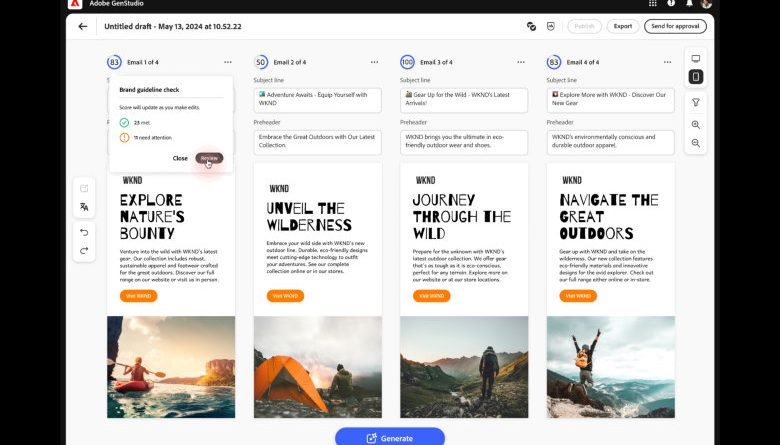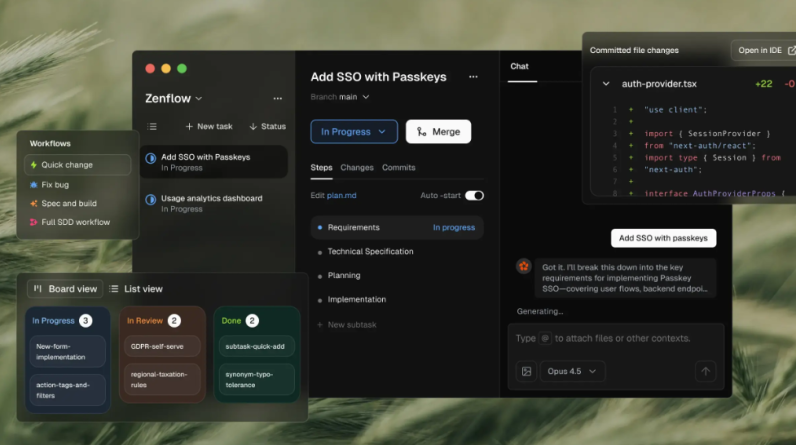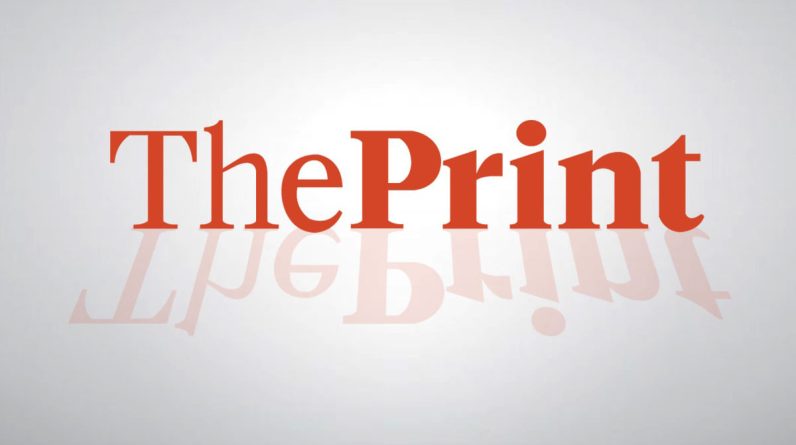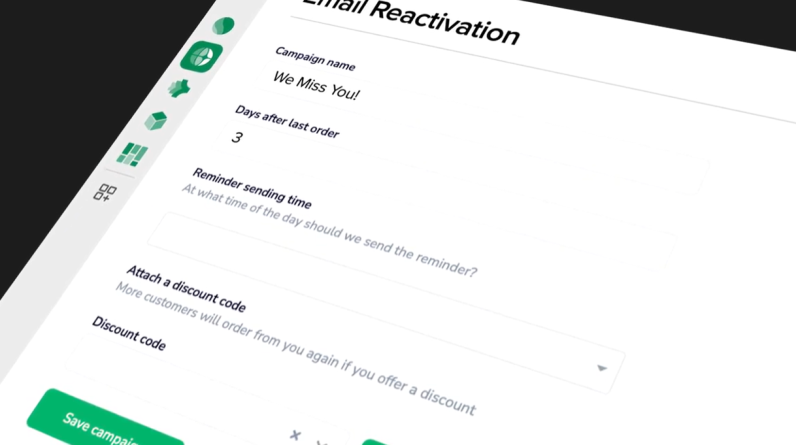
Adobe GenStudio screenshot (Adobe)
Generative AI once again topped the bill at this year’s Adobe MAX conference, which wrapped up today. Crowd pleasers for the event’s core audience of content creators include the debut of the Firefly Video Model to enable AI-generated video, new AI-powered tools and enhancements across the Creative Cloud portfolio, and the preview of a new tool that allows creative teams to collaborate on creative concept development. Its traditional Sneaks session previewed further innovations it has under development.
There were also significant announcements for enterprise brand and marketing teams, most notably a new version of the Adobe GenStudio content supply chain solution for delivering highly personalized marketing campaigns at scale. The vendor also showcased new enterprise capabilities recently added to Adobe Express, its general-purpose content design tool.
The new campaign automation tool, called GenStudio for Performance Marketing, is a single end-to-end platform that allows brand teams to set guidelines around brand voice, channels and images, and provides a self-service application for marketing teams to create variable, personalized campaigns at scale that encompass paid social ads, display ads, banners, marketing emails and other channels. It also provides immediate feedback and analytics allowing for fine-tuning during the campaign. Varun Parmar, General Manager, Adobe GenStudio, sums up:
Delivering impactful global campaigns hinges on the ability to bring marketing and creative teams closer together, with generative AI-powered workflows that eliminate cumbersome and inefficient processes. [The new product] enables creatives to focus on delivering deep creative designs that amplify a brand, while empowering their marketing counterparts to create the high volume of content variations that are needed to drive customer engagement, personalization and conversion.
Promised integrations with a range of social media channels will soon make it possible to publish content directly to the likes of Meta, TikTok and Snap, or through display ad campaigns on Google’s Campaign Manager 360 and Microsoft Advertising properties, while a forthcoming integration with Adobe Journey Optimizer will make it possible to deliver finished content to owned channels such as email and web. Speeding up content delivery in this way means that teams are then able to adjust and fine-tune the experience in real-time as trends or needs change.
How Lenovo uses the new GenStudio tool
An example of how much of a difference these capabilities will make comes from global technology brand Lenovo, which participated in the product beta. Harnessing generative AI to be able to create multiple versions of content that still adheres to brand guidelines solves a growing headache for companies that operate across many different markets. Tim Furlow, Senior Manager of E-Commerce Personalization at Lenovo, explains:
If you look at the amount of content that we need to achieve end-to-end personalization, it’s pretty astronomical. To give you an example, we just launched a campaign for four products across eight marketing channels, four languages, and three variations. That campaign alone required 384 assets.
The end-to-end automation is particularly valuable because of the rapid feedback that comes through analytics. He goes on:
Everyone talks about scaling content creation, but what really transforms your business is scaling analytics. Content metadata analytics will be the center of our future content supply chain process. It’s how we’re going to get that feedback loop that continues to improve the content we create so we can deliver more effective and on-brand visuals to better engage with our customers.
But there is some groundwork required to take advantage of the automation that the tool provides. He comments:
It’s hard to describe the feeling of working in GenStudio for Performance Marketing other than saying it’s a tool that challenges the way you think.
Documenting brand guidelines
The team has had to make sure that it is documenting all of the brand guidelines and standards that the AI uses to create and check content, such as the length of a subject line for a specific channel, or other attributes such as tone of voice or color palettes. Once these are in place, the software then automatically generates the right prompts to guide the AI. Demian Hardister, Senior Manager of E-commerce Marketing Technology at Lenovo, explains:
This really begins with defining our brand and channel guidelines as well as personas in order to generate content that is on-brand and supports personalization across our many segments. Of course, we have very well-established brand guidelines, however, we were missing documented guidelines for specific channels and details around our personas… Delivering more variations will also help us expand testing, reach more channels, and enable change at scale to learn with greater efficiency.
It’s also important to make sure that the right processes are in place and that teams know what to expect and are properly introduced to what the tool can do. He goes on:
We truly believe that [generative AI] can revolutionize our marketing content supply chain. To do so we’ll need to not only focus on the technology platform but also on people and process components.
My take
AI-powered automation is bringing some powerful new capabilities to marketing teams. But as the Lenovo example shows, there’s a lot of careful groundwork required to safely harness the potential of this new technology.







